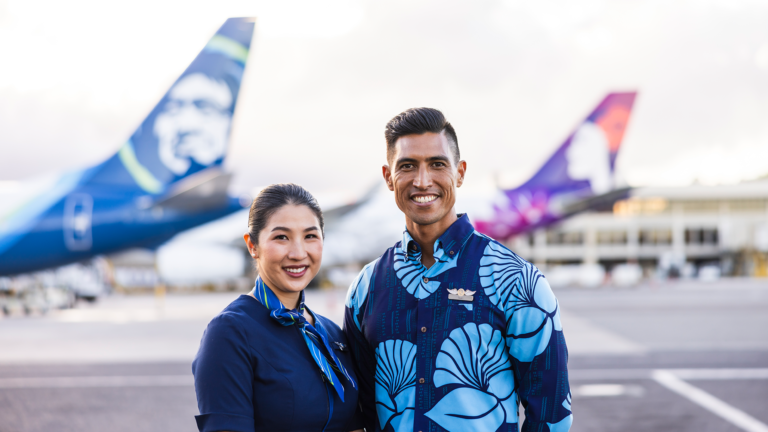Starting salaries for flight attendants at Alaska Airlines (AS) are reported to be between approximately $26,000 annually, although this range may vary based on experience and specific roles. The average salary for flight attendants at Alaska Airlines is approximately $65,000. Currently, flight attendants are not receiving the 32% increase because the union rejected the agreement.
Entry-level flight attendants typically start around $24.95 per hour. Experience Level Flight attendants with several years of experience can earn upwards of $70.31 per hour.
Table of contents
- Alaska Airlines Flight Attendant Salary
- Flight Attendant Real Review
- New Compensation Structure for Alaska Airlines Flight Attendants for 2025
- What additional benefits do Alaska Airlines Flight Attendants get?
- Alaska Airlines Flight Attendant Bases
- What Airplanes are in the Alaska Airlines Fleet?
- What are the hiring requirements for Alaska Airlines Flight Attendants?
- Steps to apply for the Alaska Airlines Flight Attendant?
- Alaska Airlines Flight Attendant Salary FAQs
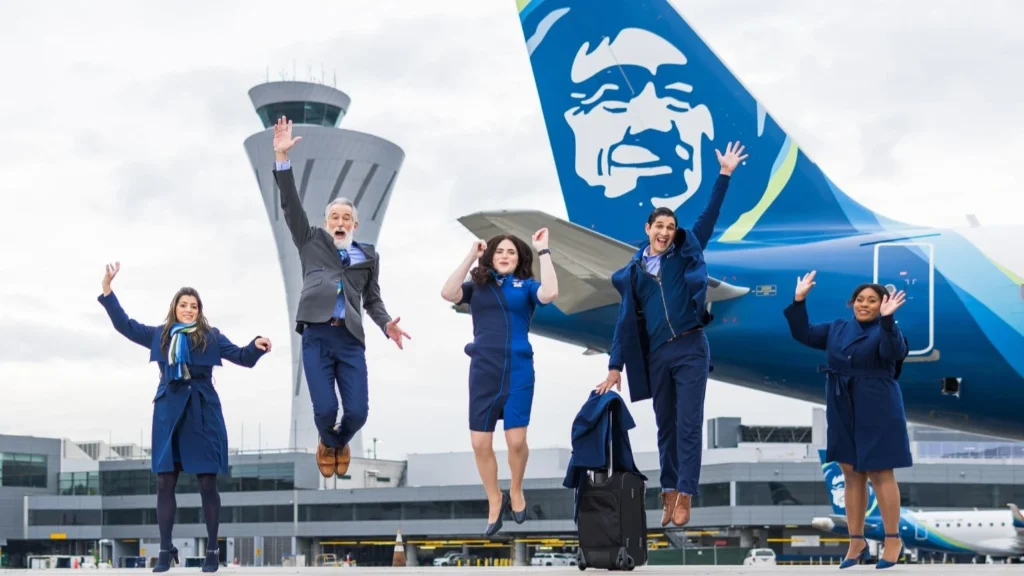
Alaska Airlines Flight Attendant Salary
As of late 2024, flight attendants at Alaska Airlines are experiencing significant changes in their compensation structure due to a new tentative agreement. Here’s a detailed overview of the salary and pay structure for flight attendants at Alaska Airlines.
Alaska Airlines Updated Flight Attendant Hourly pay is as follows :
| Experience Level | Previous Hourly Pay ($) | Hourly Pay after 32% increase ($) |
| 1 Year | 24.95 | 32.93 |
| 2 Years | 29.95 | 39.53 |
| 3 Years | 34.95 | 46.13 |
| 4 Years | 39.95 | 52.73 |
| 5 Years | 44.95 | 59.33 |
| 6 Years | 49.95 | 65.93 |
| 7 Years | 54.95 | 72.53 |
| 8 Years | 59.95 | 79.13 |
| 9 Years | 64.95 | 85.73 |
| 10+ Years | 70.31 | 92.81 |
UPDATE: Alaska Airlines is paid by a calculation of TFP— which is mileage-based. A flight attendant at Alaska is considered full-time at anywhere between 80-90 TFP. At the “hourly rates” you suggested, a first-year full-time FA would make under $27,000 annually. At the top of the scale, full-time (90 TFP) FAs only make about $65,000 per year.
A flight attendant revealed to Aviation A2Z,
Currently, the Alaska FAs are working under a contract from 2014. Even factoring normal inflation, 32% increases would barely keep up with our economy, yet we all know how hard inflation hit us the past couple of years alone. On top of that, there were many benefits in the current contract that Alaska management was proposing to take away.”
Alaska Airlines Flight Attendant
We are paid by TFP, not hour. So $24.75/TFP = $18.61/hour. 1 TFP = ~1.33 hours.
Another FA told us
Flight Attendant Real Review
Delays are paid at 50% and don’t kick in until after 8 minutes of a delay. Brand new FAs on reserve are guaranteed 90 TFP per month and 12 days off. When you spend 18 days/nights a month away from home, you need those 12 days to take care of your personal life and maintain relationships with spouses and friends, and spend time with children and others who may depend on you.
New FAs make more like $27k/ year, and if they work more than scheduled, let’s say 120 hours per month which means you are only home a few days in a month, you could earn $36k/ year. The reality of our job is that we are not paid for MANY hours of our time when we are required to be at the airport or on the plane but are not getting paid. Here are some examples:
– you are an LAX-based FA and the company needs to transport you to San Diego to work a flight because they are short-staffed. They will hire a car (think small Uber) and have you driven to SAN. That drive can take 2.5 a 3 hours. The compensation for that time is $20. Not $20/hour. $20 TOTAL. Then when you get there, you could be flown on a few short flights (let’s say SAN-SEA-LAS) where you will spend roughly 7-8 more hours on a plane. And if you have any ground time in SEA, unless it’s more than 2 hours, you will be paid nothing. NOTHING. So in this scenario, you have 4-6 hours of time where you are paid a total of $20. Because we don’t get paid for boarding. We don’t get paid for ground time less than 2 hours. And a “limo” (contract language but it means a regular car) ride from LAX-SAN pays you a total of $20. So for this 10+ hour day, a starting FA will be paid a whopping $20+$124.75. That equates to $14.48/hour.
– You are working SEA-BOS. We are required to be at the airport one hour before flight time. To avoid the possibility of being late, you arrive 90 min before flight time. You get to the gate and learn that your inbound aircraft will arrive 45 min late. You are paid fractionally for this time. The plane arrives, passengers deplane, cleaners clean the plane, and you can finally board. You check all of the safety equipment in your area of responsibility, you brief your crew, and boarding finally starts. Don’t forget, you’re now working for free because you aren’t being paid for boarding. During boarding, you are monitoring the size and quantity of carry-on bags, looking for any carryons that could present safety issues (ie bags with built-in lithium batteries), being aware of any passenger displaying signs of intoxication, etc. Finally, everyone has boarded, and you’re ready to close the door, but wait. The pilots notice a warning light and need to have maintenance come out to take a look at it. Now you’re delayed even more and passengers are starting to worry about missing connecting flights. So you are now answering questions, dealing with stressed-out passengers, and being paid delay pay (half your hourly rate starting after the first 8 minutes of the delay). Finally, after 30 minutes, the plane is deemed to be safe to fly and the door is finally closed. So once again, this new FA has been at the airport for one hour + 45 minutes waiting for the inbound aircraft to arrive + 40 minutes of boarding time + a 30-minute mechanical delay. 2 hours and 55 minutes of mostly unpaid time. That same FA now flies to BOS which will take approximately 5-1/2 hours. The plane lands, deplaning takes 15 minutes and the clock now stops for pay. This person has worked roughly 8-1/2 hours and will be paid for 5-1/2 hours when converting our TFP to hours.
NOTE: Despite the promising advancements, flight attendants voted against the contract in August 2024 due to unresolved concerns regarding other aspects of their compensation and working conditions. The union plans to survey its members to identify these key issues before resuming negotiations with Alaska Airlines.
Alaska Airlines Updated Flight Attendant Annual Pay are as follows :
The new salary structure reflects a significant increase in hourly wages based on experience levels. Below is a table that outlines the updated hourly wages and corresponding annual salaries for Alaska Airlines flight attendants:
Note: While Alaska Airlines has proposed a substantial pay 32% increase as part of a new contract, the flight attendants are currently not receiving this compensation due to the agreement’s rejection and ongoing negotiations.
Key Features of the New Agreement
The proposed contract includes several important features:
- Average Pay Increase: Flight attendants are set to receive an average pay increase of 32% over three years.
- Boarding Pay: This agreement introduces legally binding boarding pay for unionized flight attendants for the first time in the industry, ensuring they are compensated for time spent assisting passengers during boarding.
- Retroactive Pay: The contract also includes provisions for retroactive pay covering 20 months, further enhancing overall compensation.
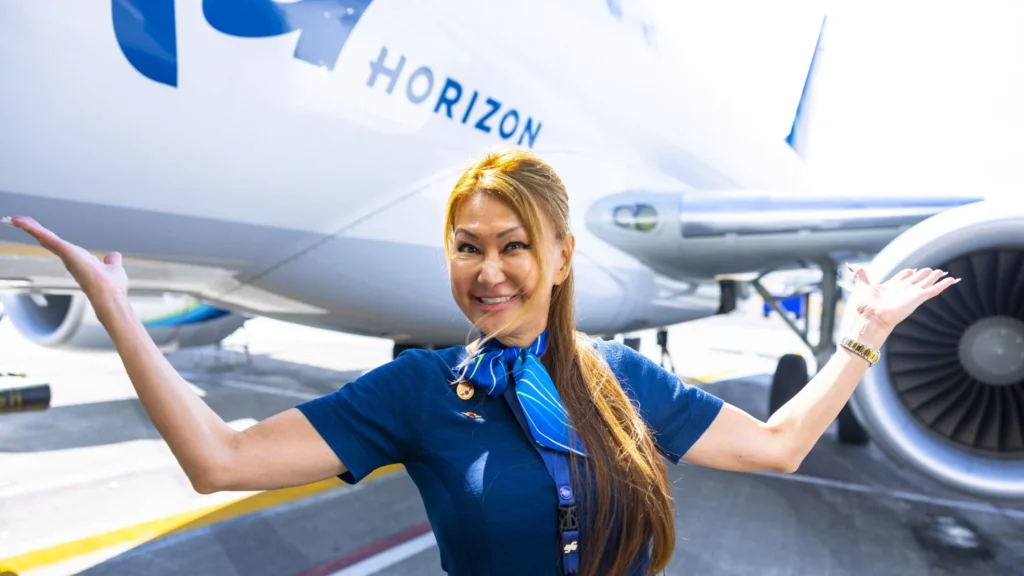
New Compensation Structure for Alaska Airlines Flight Attendants for 2025
Alaska Airlines is undergoing significant changes in its compensation structure for flight attendants, driven by ongoing negotiations with the Association of Flight Attendants (AFA-CWA). The proposed new contract aims to enhance wages and benefits substantially.
New Pay Increase in 2025
Under the latest tentative agreement, flight attendants are set to receive an average pay increase of 32% over three years.
- This increase is particularly noteworthy as it includes a legally binding provision for boarding pay, which compensates attendants for their time spent assisting passengers during the boarding process—an industry first.
- Typically, flight attendants are only paid once the cabin doors close, so this change represents a significant shift in compensation practices.
- For instance, flight attendants in their first year will see their hourly wage rise from $24.95 to approximately $32.
Those with eight years of service will experience an increase from $42.99 to around $54.25 per hour. Moreover, veteran flight attendants who previously earned $60.31 per hour will now receive $74, with potential earnings reaching up to $78.51 by the end of the contract period due to scheduled annual raises of 3% on August 15 in 2025 and 2026.
Negotiation Challenges
- Despite these promising figures, the proposed contract faced rejection from flight attendants in August 2024.
- Union members expressed concerns that while the pay increases were substantial, other critical issues remained unresolved, prompting a call for further negotiations.
- The AFA-CWA plans to survey its members to identify these key concerns before returning to the bargaining table with Alaska Airlines.
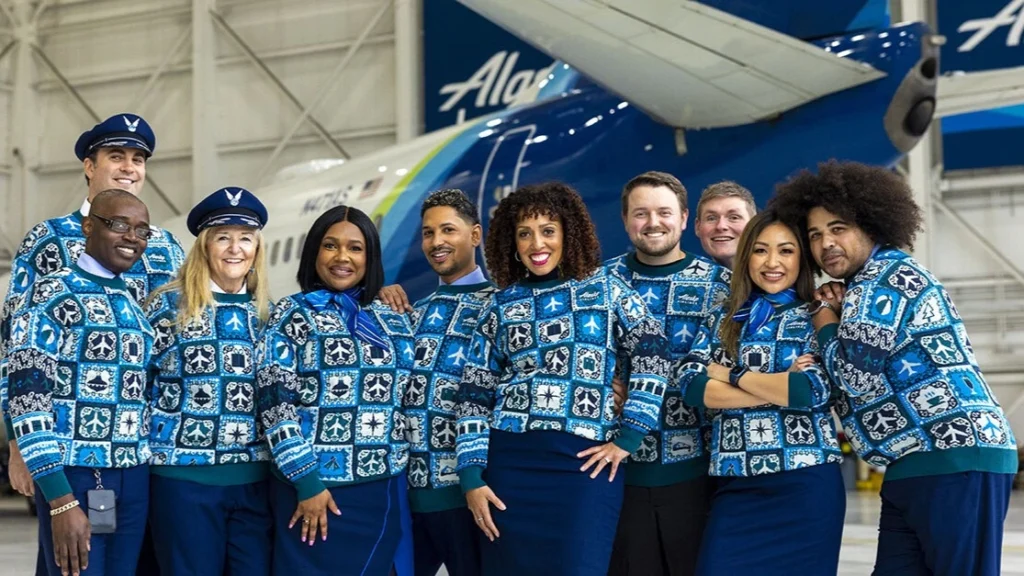
What additional benefits do Alaska Airlines Flight Attendants get?
Alaska Airlines offers a variety of additional benefits to its flight attendants, enhancing their overall employment experience. Here’s a comprehensive look at these benefits:
Key Benefits for Alaska Airlines Flight Attendants :
- Travel Privileges
Flight attendants enjoy unlimited standby travel on Alaska Airlines and Horizon Air, which allows them to fly for free wherever the airlines operate. Additionally, they receive discounted travel on other airlines, making it easier to explore new destinations. - Performance-Based Pay
Alaska Airlines implements a Performance Based Pay (PBP) system, which rewards employees based on the company’s performance in areas such as safety and guest experience. This payout can equate to over 6% of an employee’s annual pay, providing a significant financial incentive. - Employee Stock Purchase Plan
Employees can participate in an employee stock purchase program, allowing them to buy company stock at a discounted rate. This benefit not only fosters a sense of ownership but also contributes to long-term financial growth. - 401(k) Retirement Plan
Alaska Airlines offers a competitive 401(k) plan with company contributions, helping employees save for retirement effectively. - Health and Wellness Benefits
The airline provides comprehensive health insurance options that include medical, dental, and vision coverage. Employees also have access to paid time off for various needs, including family and medical leave. - Education Assistance
Alaska Airlines supports employees seeking further education through tuition reimbursement programs, enabling them to enhance their skills and advance their careers. - Flexible Work Options
After gaining seniority, flight attendants often benefit from more flexible scheduling options, allowing them to manage their work-life balance better. - Family Travel Benefits
Recently, Alaska Airlines expanded its travel benefits to allow employees to designate up to two additional individuals (instead of parents) who can enjoy the same travel privileges. This change reflects the airline’s commitment to accommodating diverse family structures.
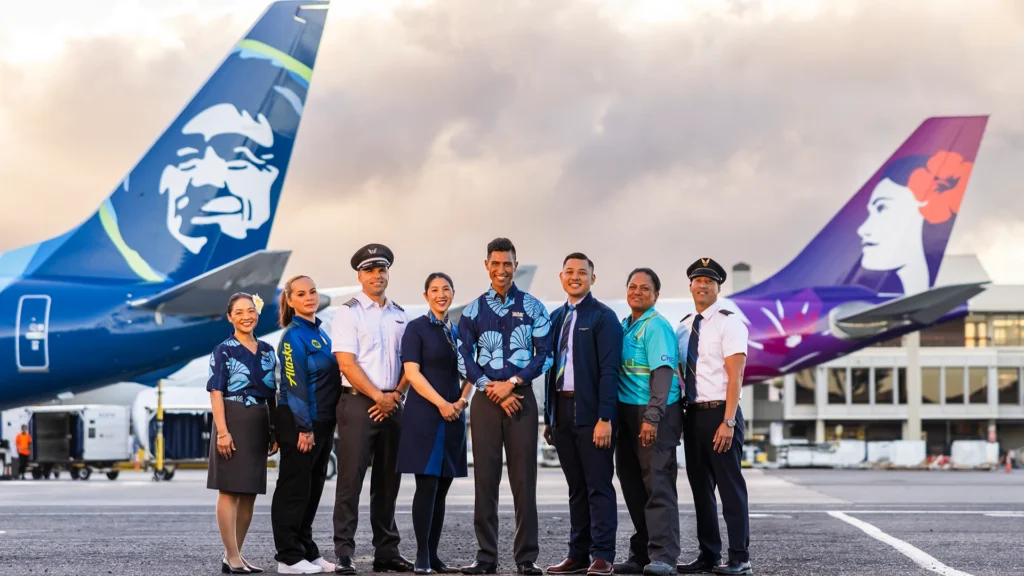
Alaska Airlines Flight Attendant Bases
Alaska Airlines operates several flight attendant bases across the United States, providing crew members with locations to start and end their flights. These bases are strategically situated in cities that serve as key hubs for the airline’s operations. Here’s a detailed overview of the current flight attendant bases:
Current Flight Attendant Bases
- Anchorage, AK
- Seattle, WA
- Portland, OR
- Los Angeles, CA
- San Diego, CA
- San Francisco, CA
These bases are essential for Alaska Airlines as they connect a wide network of destinations, primarily along the West Coast and into Alaska and Hawaii.
Flight attendants are assigned to a “home base” during their training, and their schedules typically begin and end at this location. As they gain seniority, they can bid for different bases if they relocate or commute.
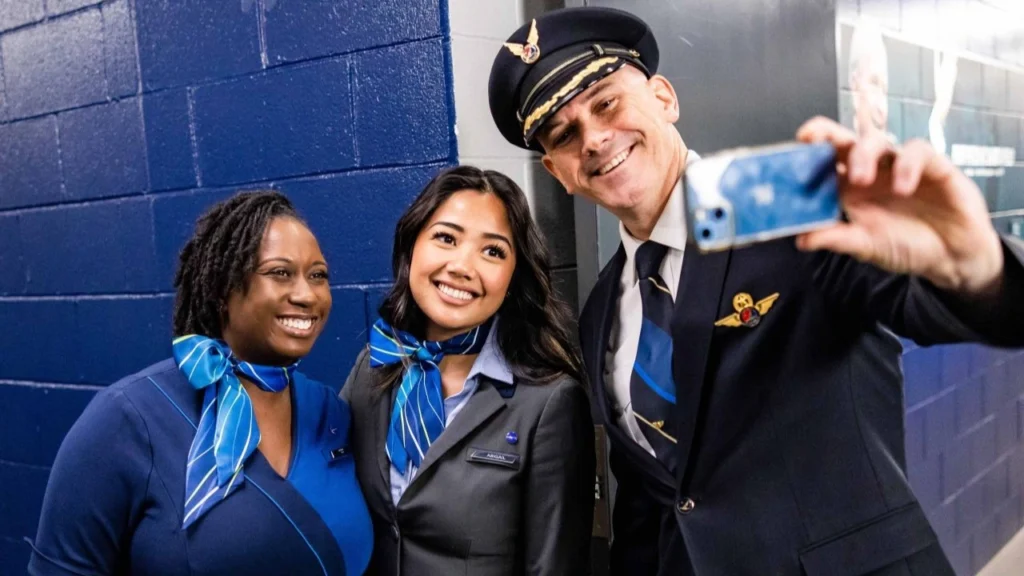
Life as an Alaska Airlines Flight Attendant
- Working as a flight attendant for Alaska Airlines is described as fast-paced and filled with responsibilities.
- Flight attendants ensure passenger safety and comfort while providing memorable travel experiences.
- However, it’s important to note that many flight attendants face financial challenges due to low starting pay and high living costs in these base cities.
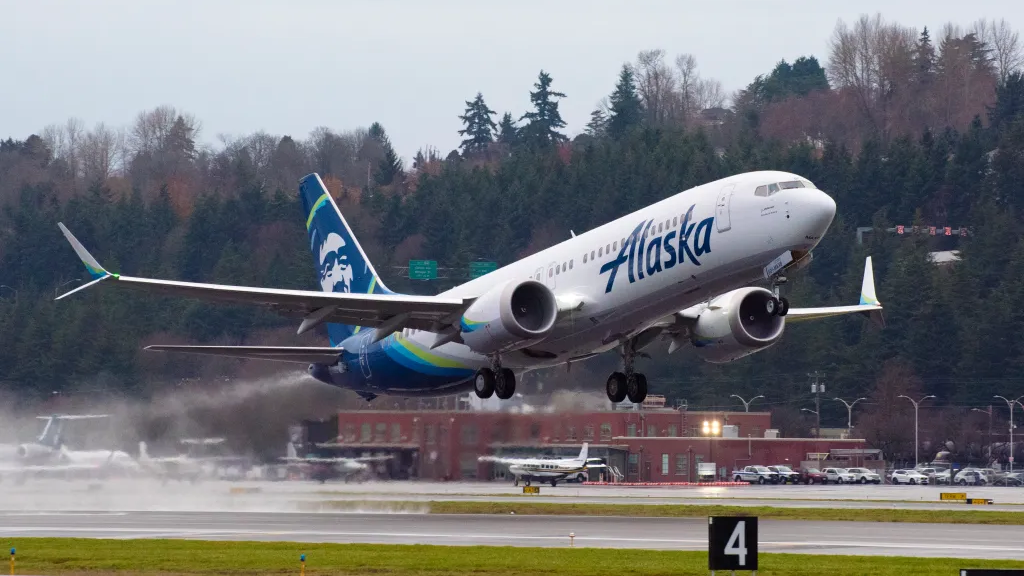
What Airplanes are in the Alaska Airlines Fleet?
Alaska Airlines maintains a diverse fleet of Boeing 737 aircraft complemented by Embraer E175 regional jets. As of late 2024, the fleet consists of the following aircraft:
- Boeing 737-9 MAX: 72 aircraft, seating 178 passengers (16 first class, 24 premium, and 138 in the main cabin)
- Boeing 737-900ER: 79 aircraft, also seating 178 passengers
- Boeing 737-900: 6 aircraft with the same seating configuration
- Boeing 737-8 MAX: 5 aircraft, with a seating capacity of 159 (12 first class, 30 premium, and 117 in the main cabin)
- Boeing 737-800: 61 aircraft, similarly configured to the MAX variant
- Boeing 737-700: 14 aircraft, seating 124 passengers
- Embraer E175 (operated by Horizon Air): 44 aircraft, seating 76 passengers
- Embraer E175 (operated by SkyWest Airlines): 42 aircraft with the same seating capacity
Additionally, Alaska Airlines has a small cargo fleet consisting of converted Boeing freighters:
- Boeing 737-800F: 1 freighter
- Boeing 737-700F: 3 freighters
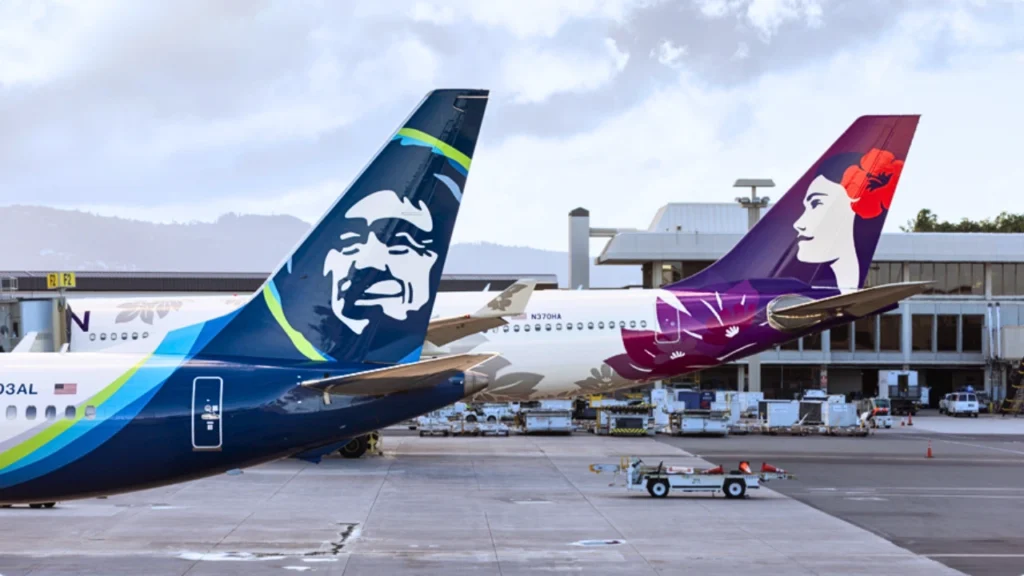
What are the hiring requirements for Alaska Airlines Flight Attendants?
To become a flight attendant with Alaska Airlines, candidates must meet specific hiring requirements that reflect the responsibilities and challenges of the role. Here’s a detailed overview of these requirements:
Minimum Age and Education
- Candidates must be at least 21 years old.
- A high school diploma or equivalent is required.
Experience
- Applicants should have a minimum of two years of customer or community service experience. This experience helps ensure that candidates can effectively interact with passengers and provide excellent service.
Physical Requirements
- Candidates must be able to reach a height of 80 vertical inches (approximately 5’2”) while standing on their toes or wearing shoes.
- They should be comfortable in water, as they will need to pass a swimming test during training, which includes wearing a life vest.
- The ability to secure oneself in a jump seat with a harness without needing a seat belt extension is also necessary.
- Applicants must be able to lift up to 35 pounds, push and pull service carts, and stand for extended periods.
Authorization and Relocation
- Candidates must have authorization to work in the U.S. and be able to enter and exit Canada and Mexico.
- Willingness to relocate to any of Alaska Airlines flight attendant bases is essential. These bases include cities like Anchorage, Seattle, and Los Angeles.
Professional Standards
- Applicants should meet the company’s professional standards regarding appearance, which include specific criteria for tattoos, piercings, and hair color.
- They must demonstrate the ability to represent the brand with pride and integrity.
Training Requirements
- Selected candidates will undergo 4 to 6 weeks of intensive training, which is unpaid. Training covers safety protocols, emergency procedures, and customer service skills.
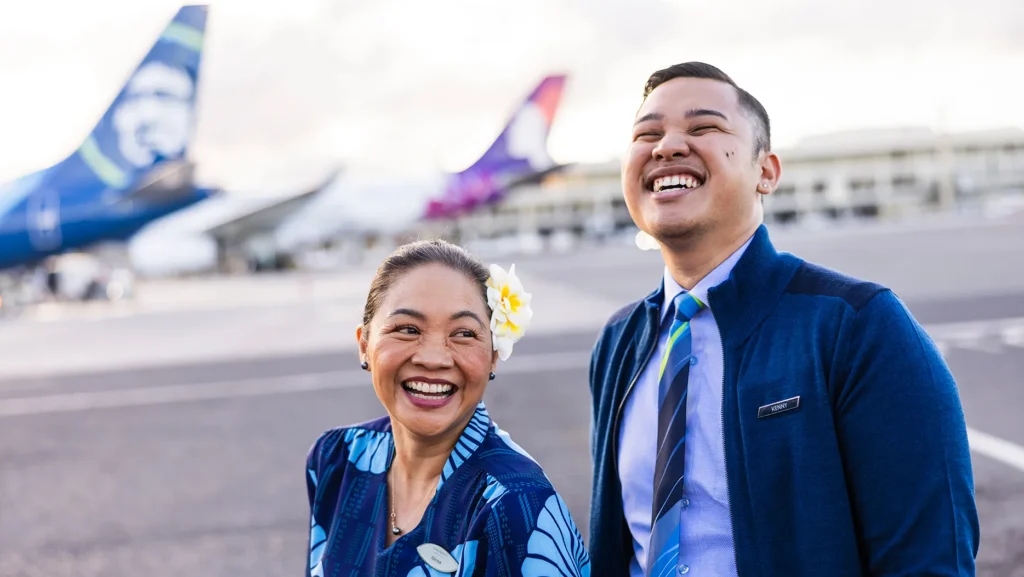
Steps to apply for the Alaska Airlines Flight Attendant?
To apply for a flight attendant position with Alaska Airlines, follow these steps to navigate the application process effectively:
1. Review the Requirements
Before applying, ensure you meet the minimum qualifications:
- You must be at least 21 years old.
- A high school diploma or equivalent is required.
- You need two years of customer or community service experience.
- Authorization to work in the U.S. and the ability to enter/exit Canada and Mexico are essential.
- You should be able to reach a height of 80 vertical inches (approximately 5’2”).
- You must pass a swimming test and meet specific professional appearance standards.
2. Submit Your Application
Visit the Alaska Airlines careers website and submit an online application. Provide your personal information, employment history, and relevant skills. Ensure that your application reflects your customer service experience and enthusiasm for the role.
3. Complete Online Screening
After submitting your application, Alaska Airlines will review it. If selected, you will receive an invitation to complete an online screening assessment. This step is crucial as it determines whether you can proceed to the next phase of the hiring process.
4. Participate in Interviews
If you pass the online screening, you will be invited to participate in a dynamic interview process. This typically includes:
- An orientation session.
- Group activities that assess teamwork and communication skills.
- Individual interviews where you will answer behavioral questions related to customer service and crisis management.
Prepare for these interviews by reflecting on past experiences that demonstrate your ability to handle challenging situations and provide excellent service.
5. Undergo Training
If you complete the interview process, you will receive an offer and must undergo 4 to 6 weeks of intensive training (unpaid). Training covers safety protocols, emergency procedures, and customer service techniques.
6. Begin Your Career
Upon completing training, you will start working as a flight attendant on a reserve basis, meaning you will need to be available for work on short notice. Your schedule will depend on your base seniority.
Alaska Airlines Flight Attendant Salary FAQs
Experience Level Flight attendants with several years of experience can earn upwards of $70.31 per hour. However, they are work-based on Trip for Pay.
If you complete the interview process, you will receive an offer and must undergo 4 to 6 weeks of intensive training (unpaid). Training covers safety protocols, emergency procedures, and customer service techniques.
Stay tuned with us. Further, follow us on social media for the latest updates.
Join us on Telegram Group for the Latest Aviation Updates. Subsequently, follow us on Google News

